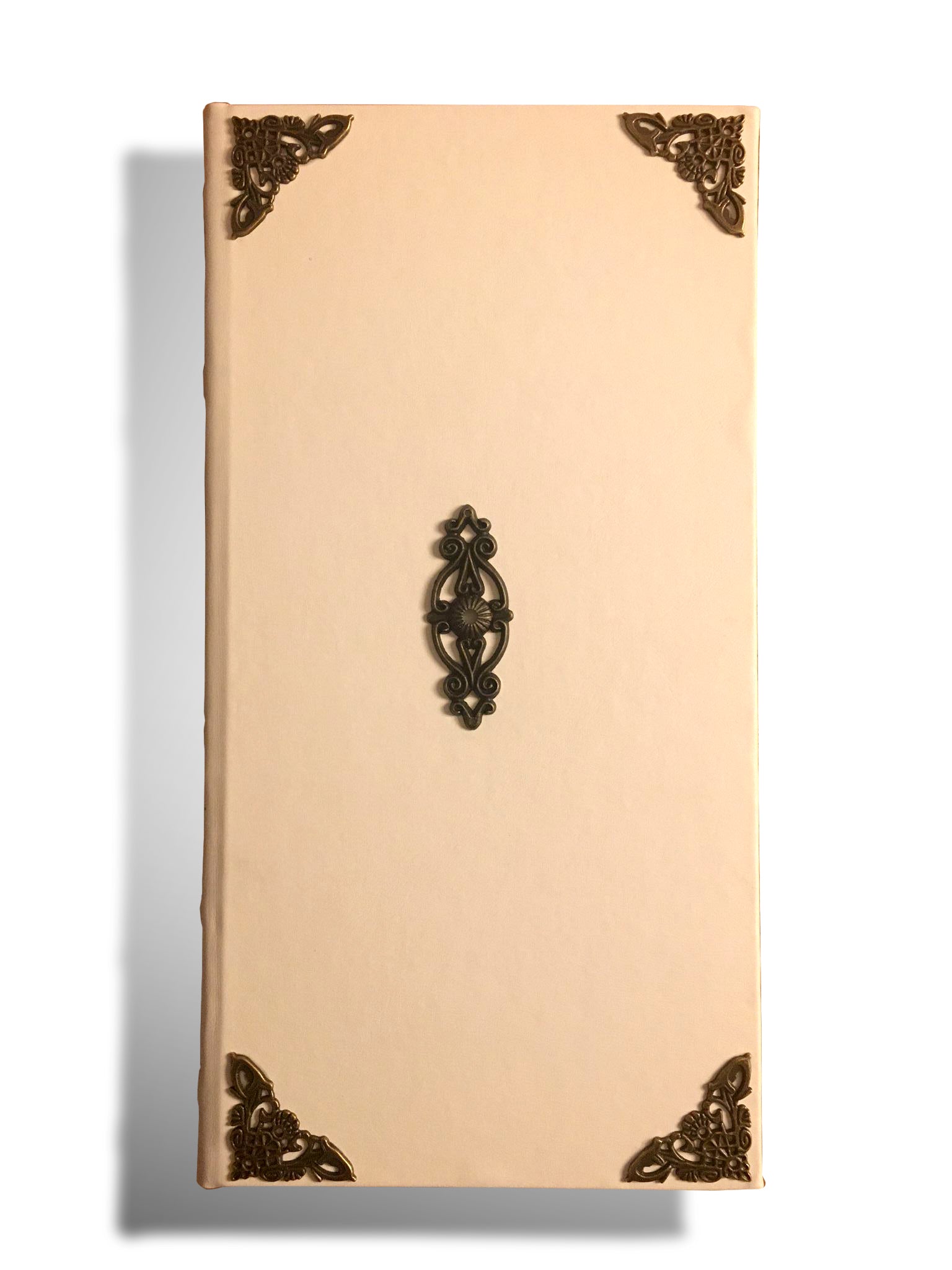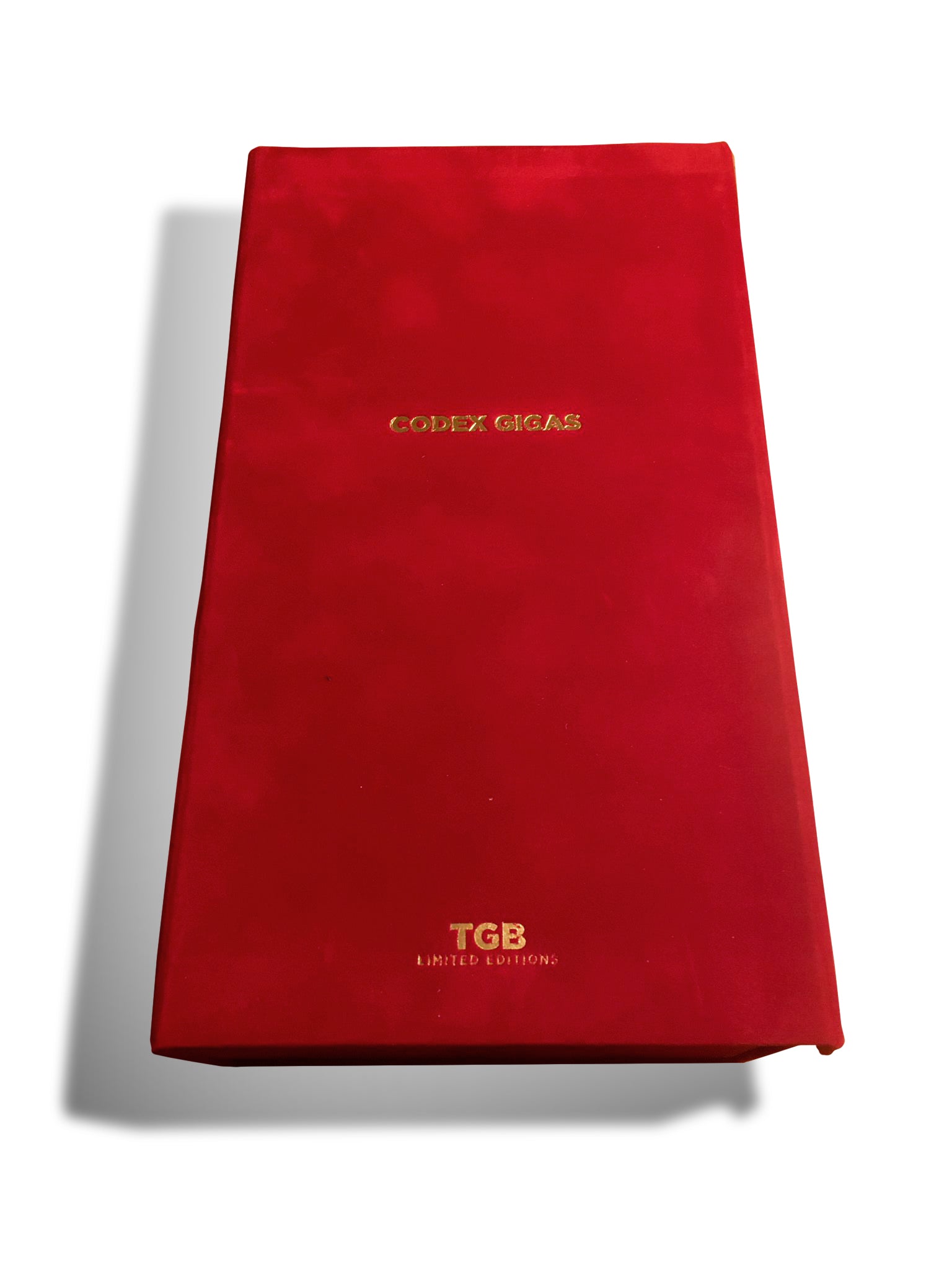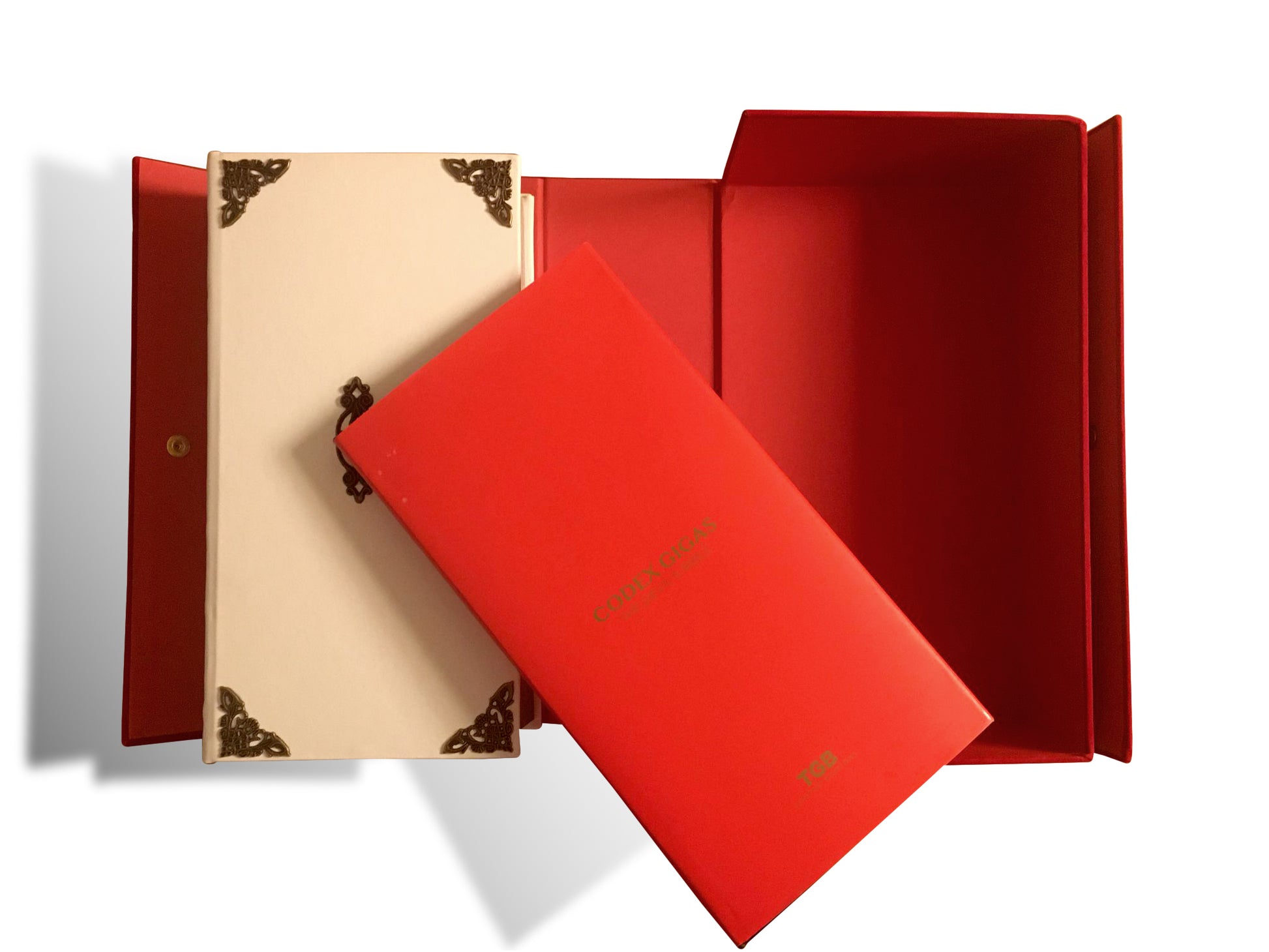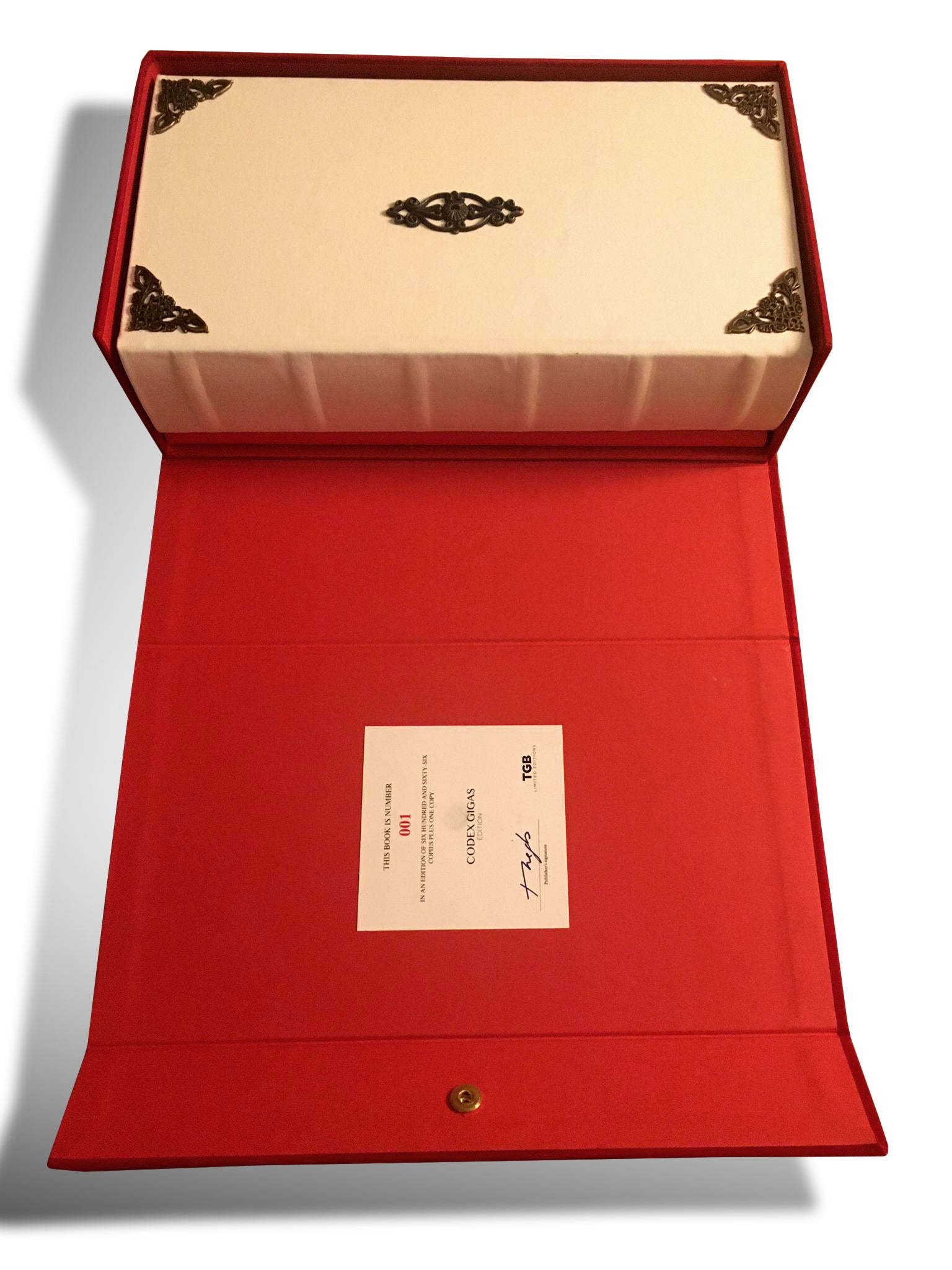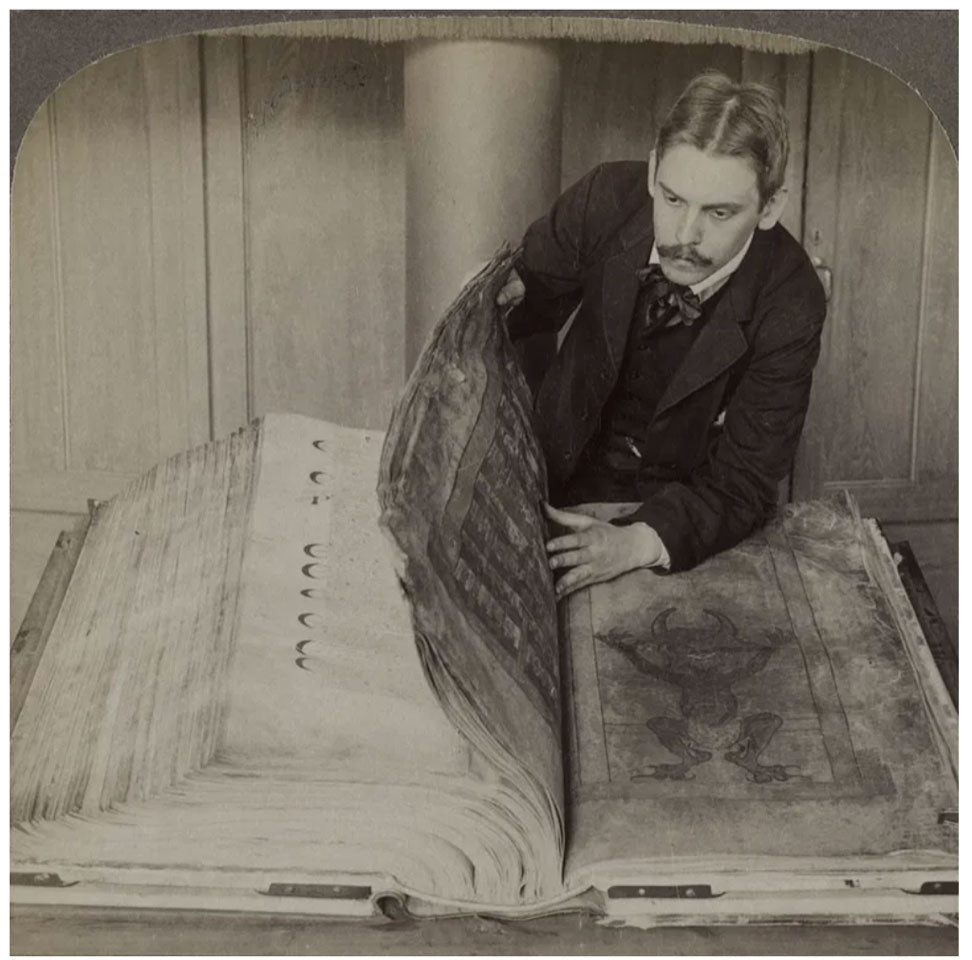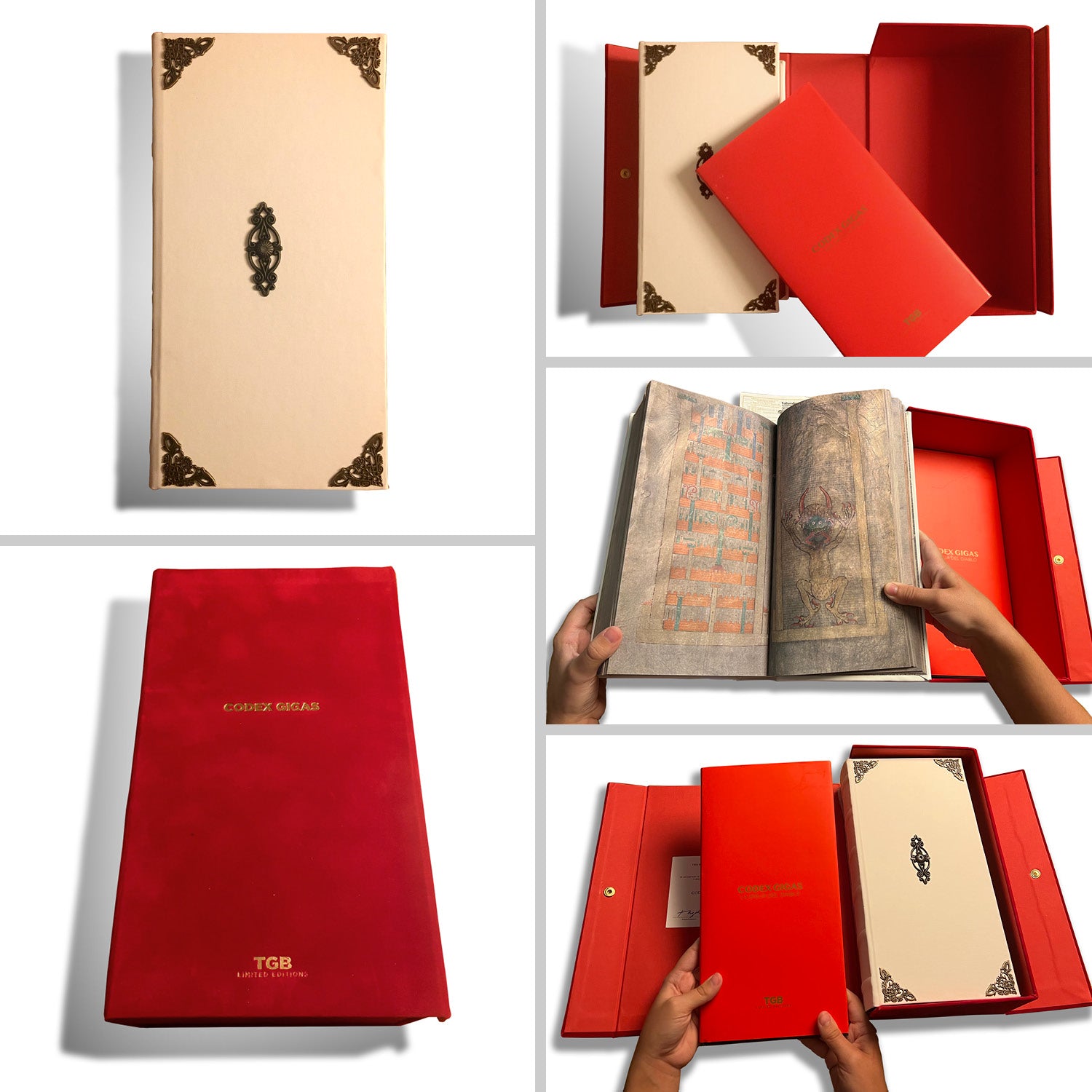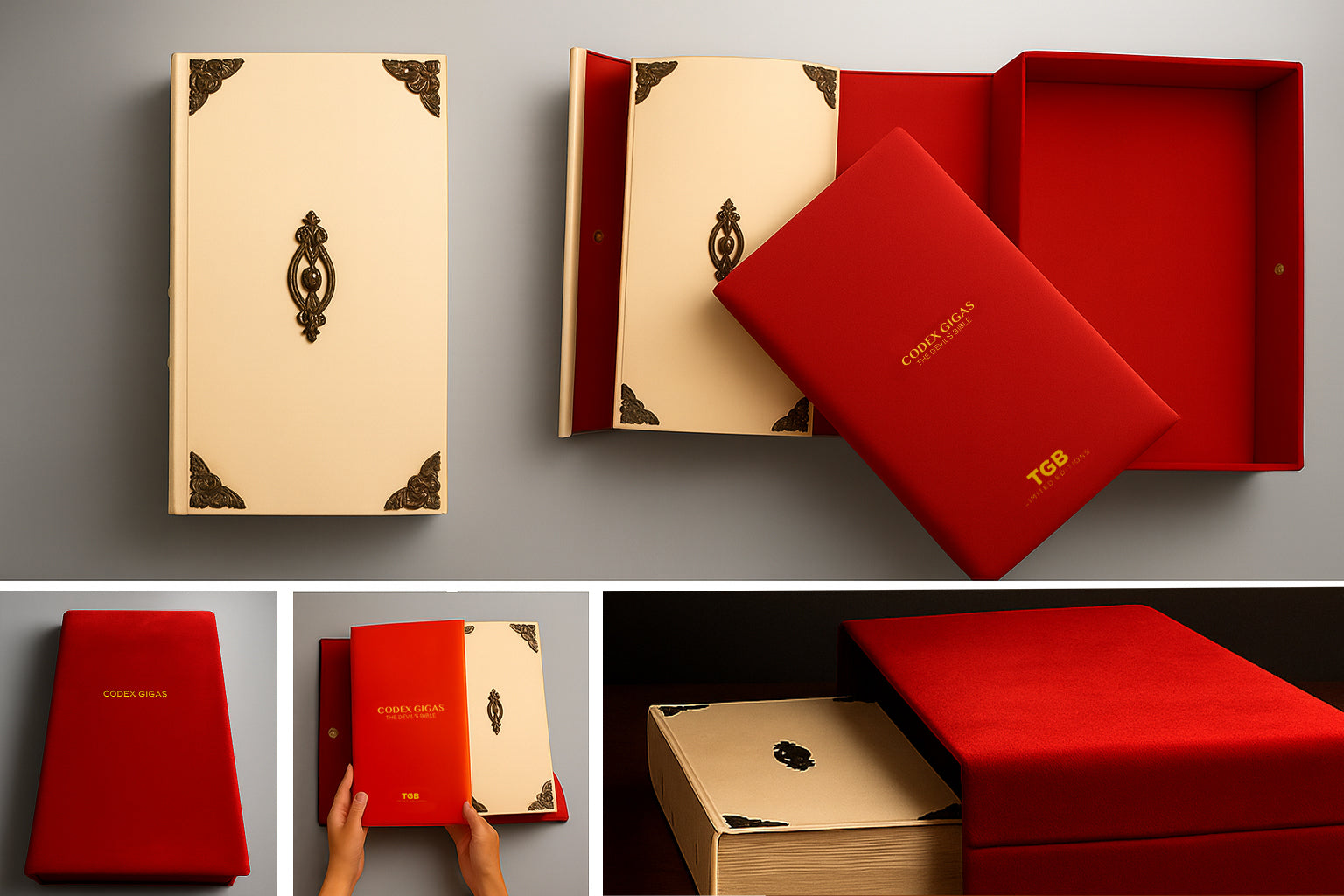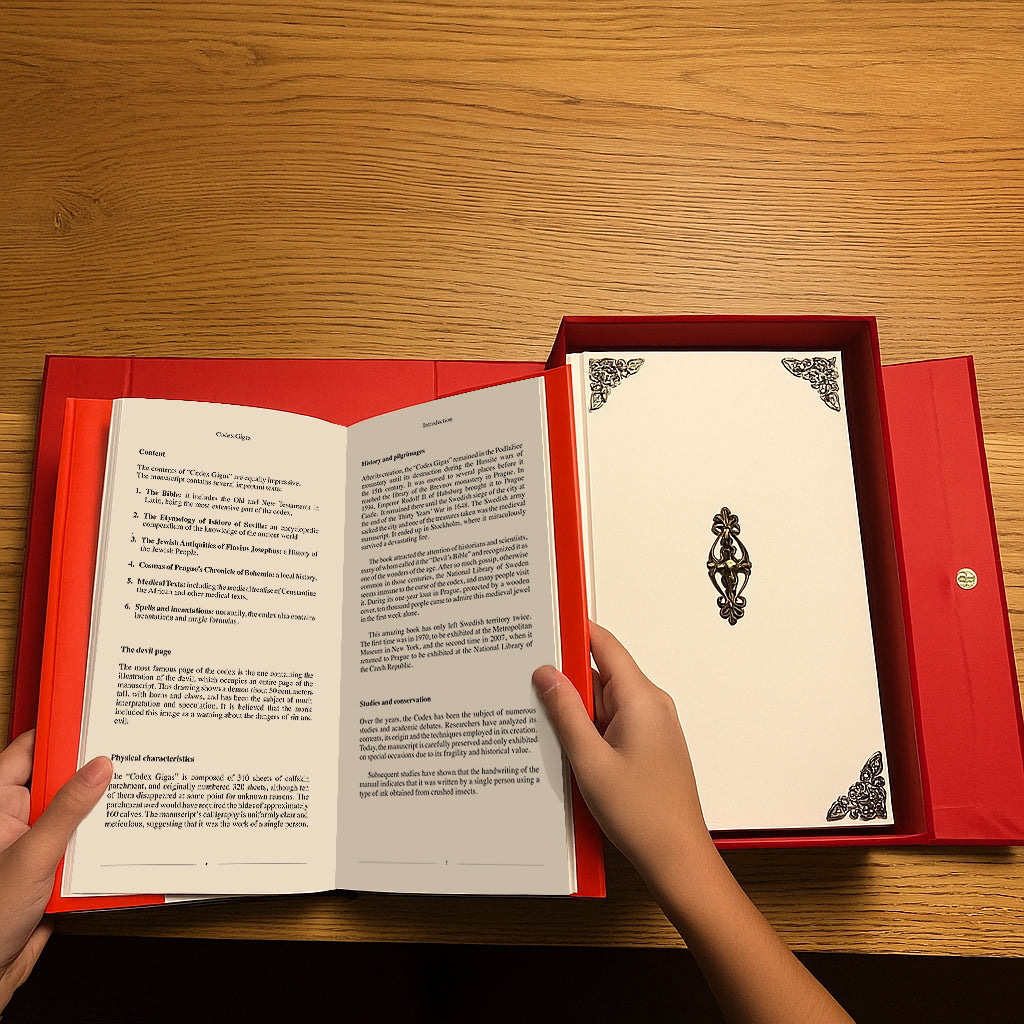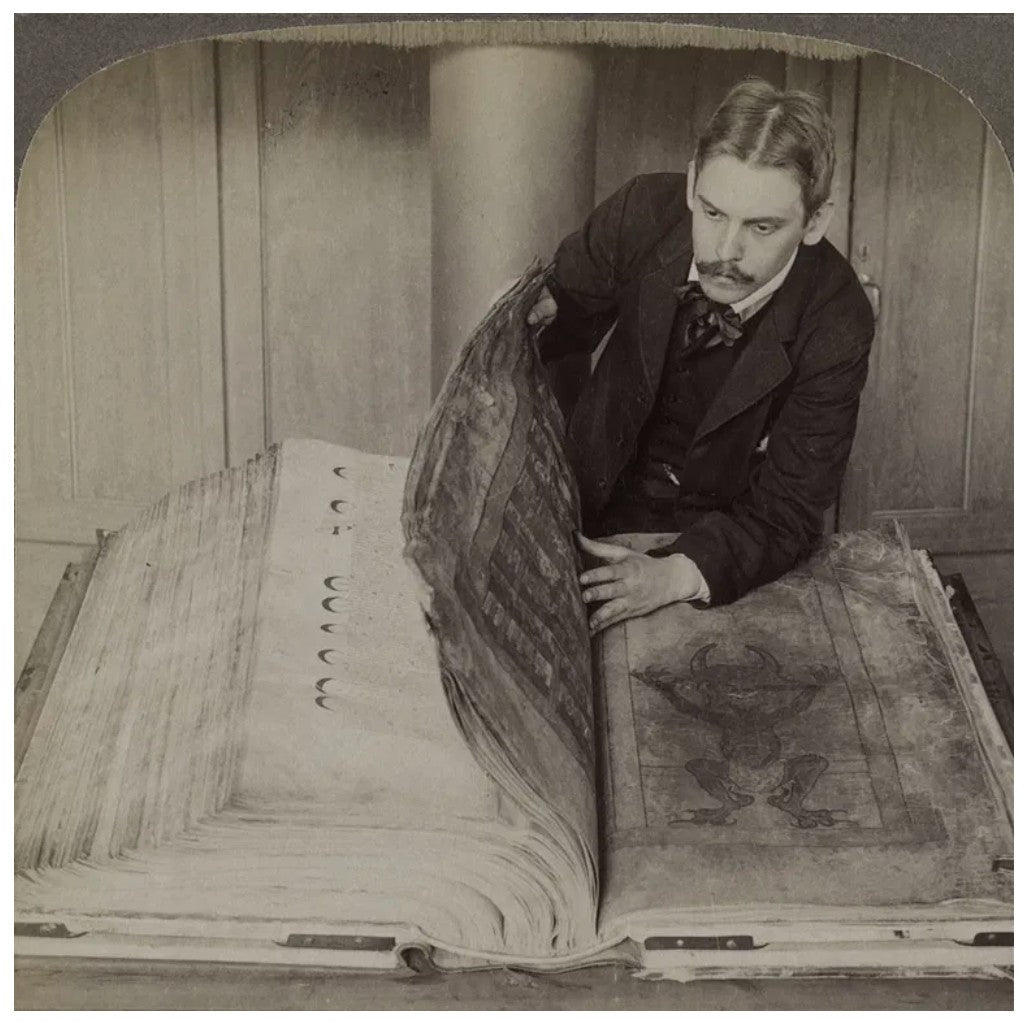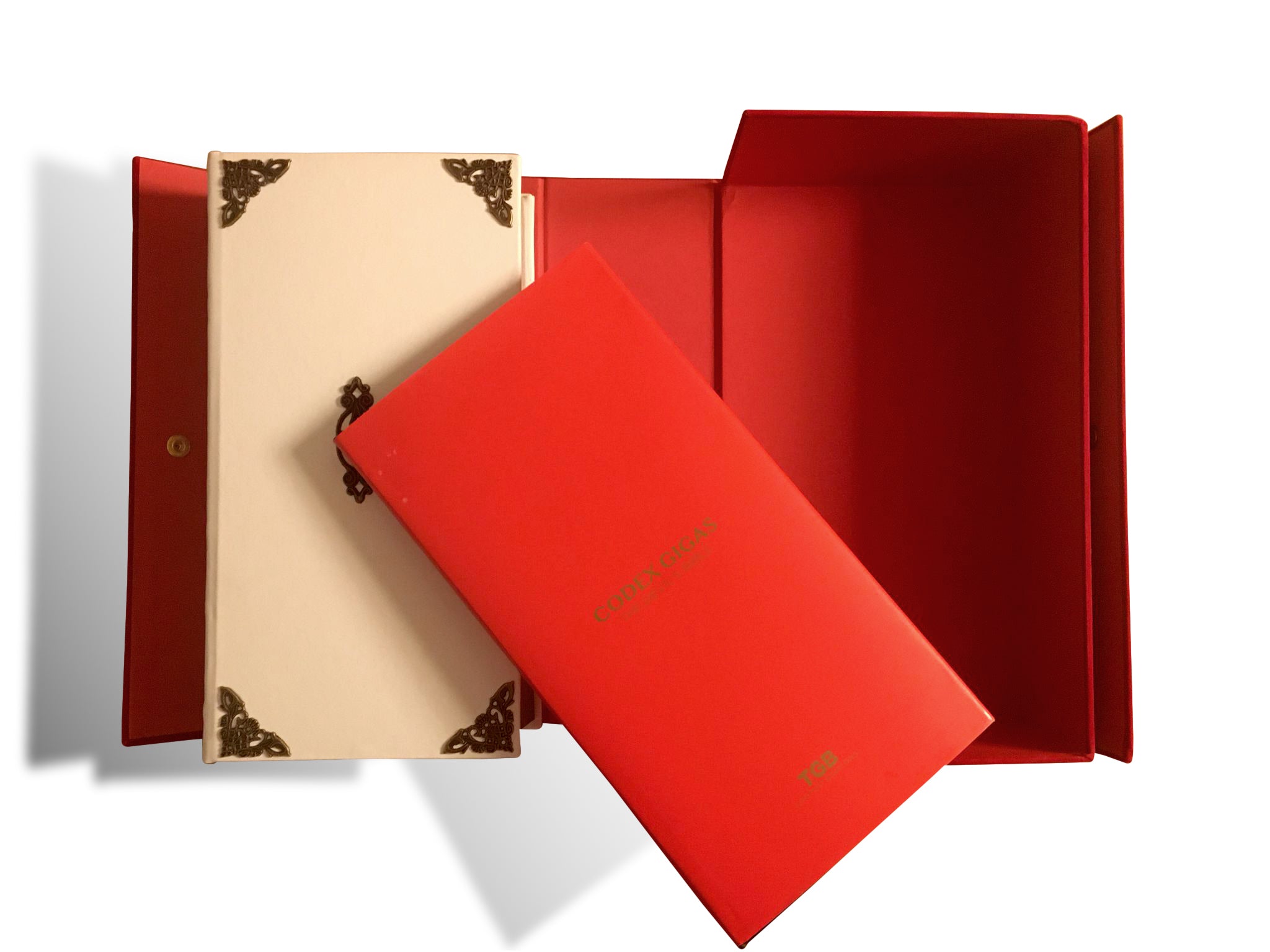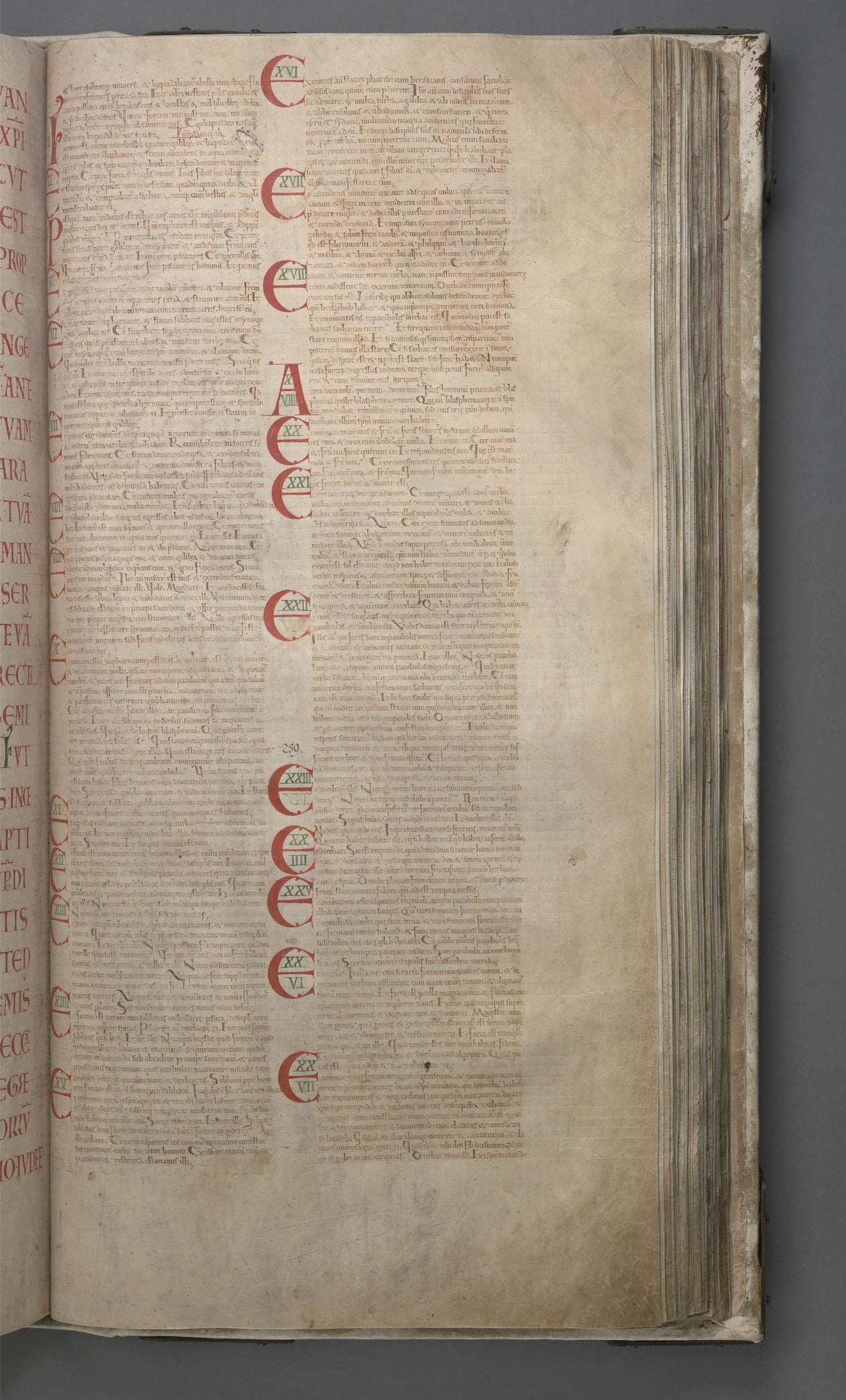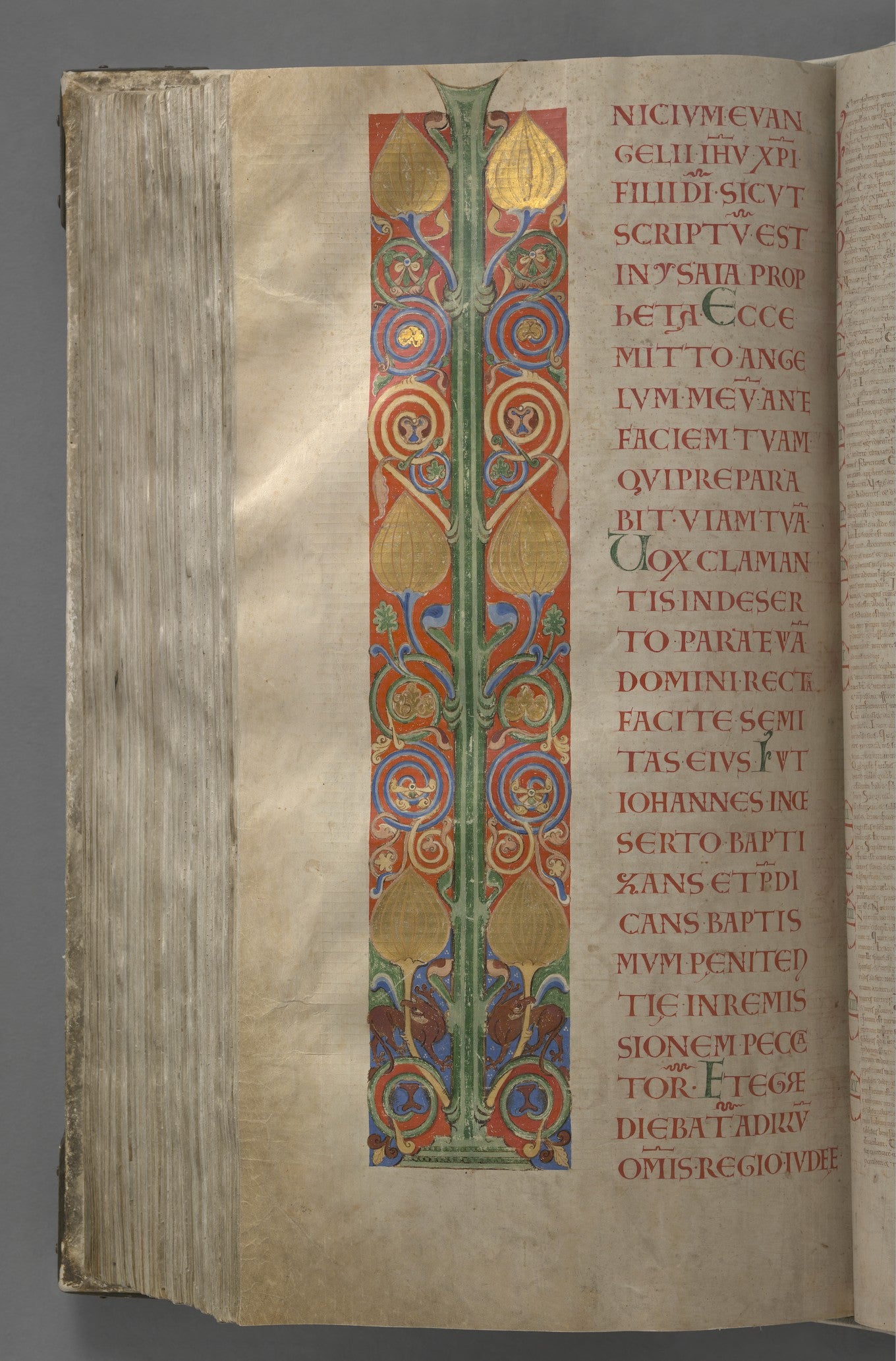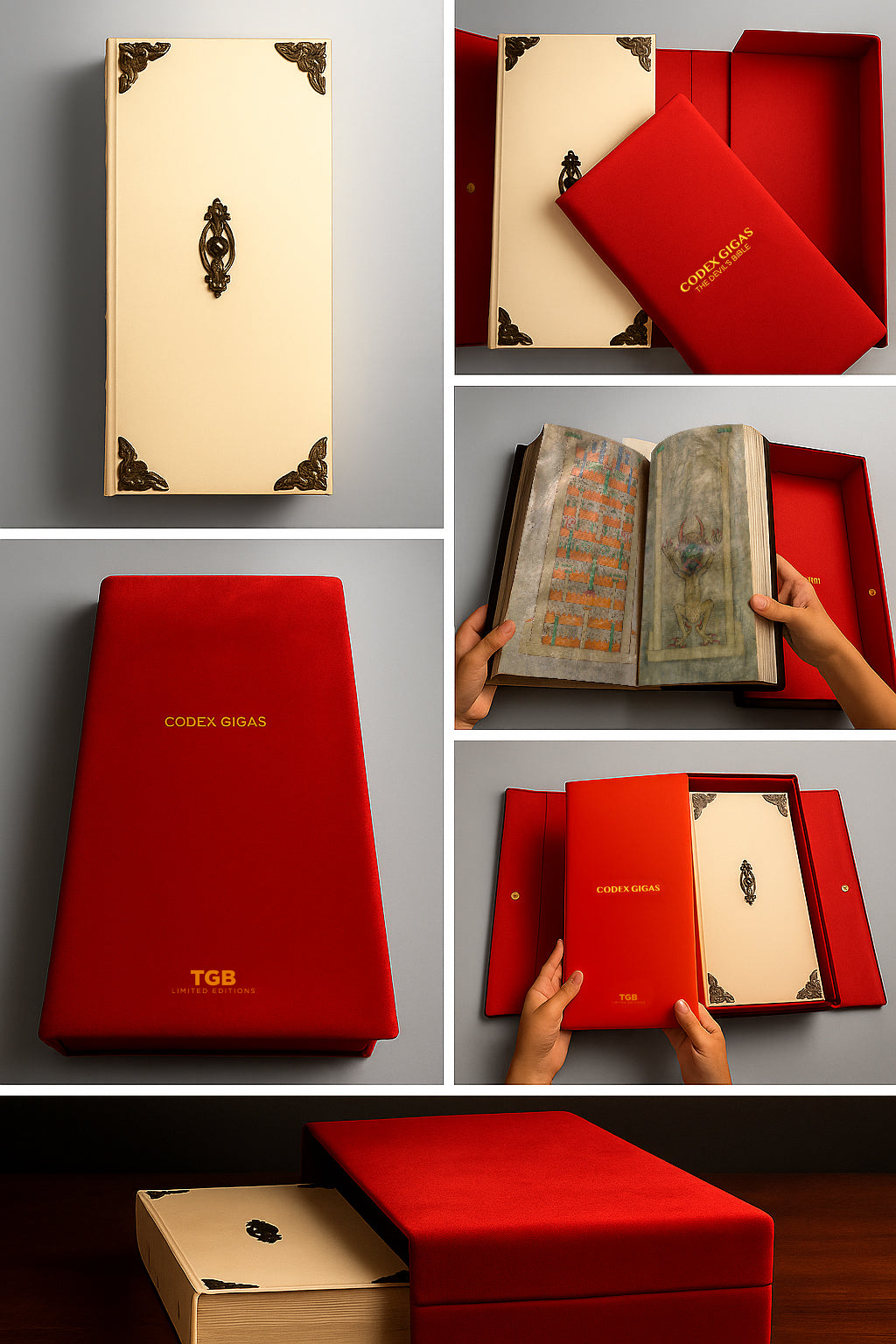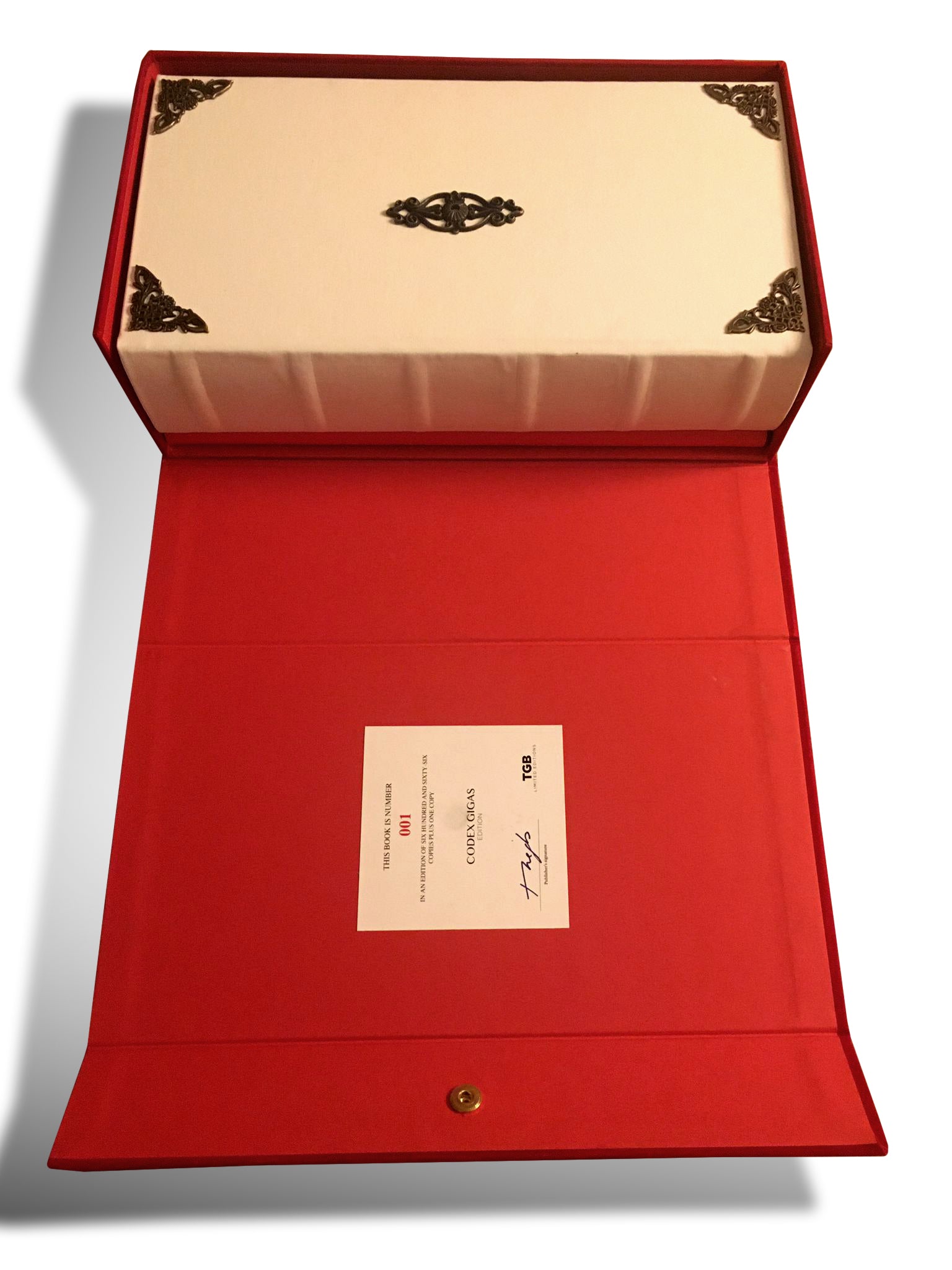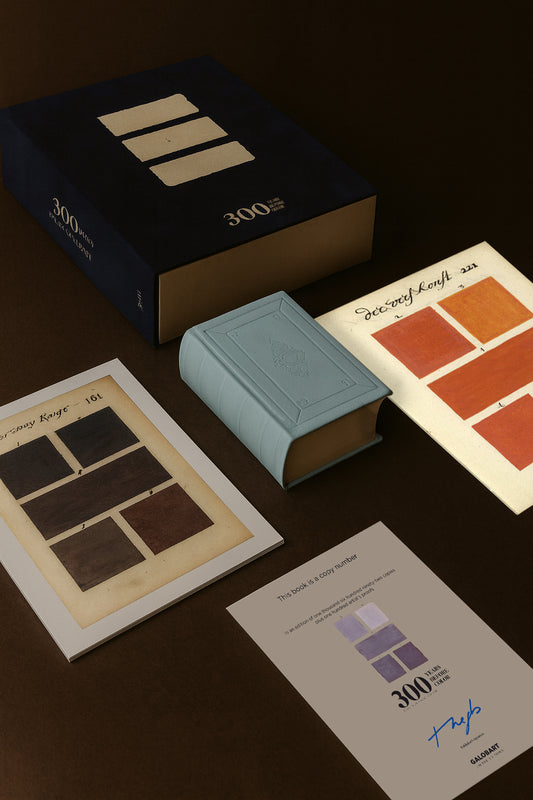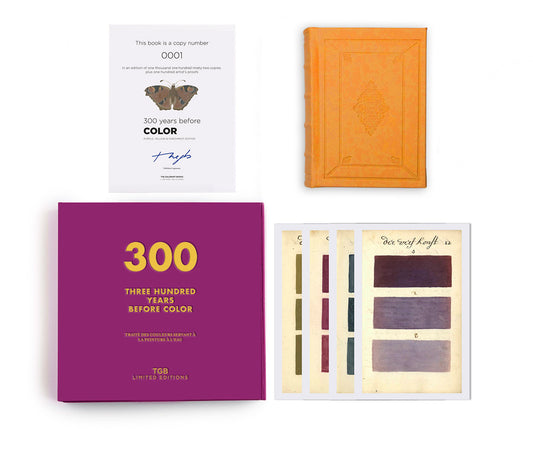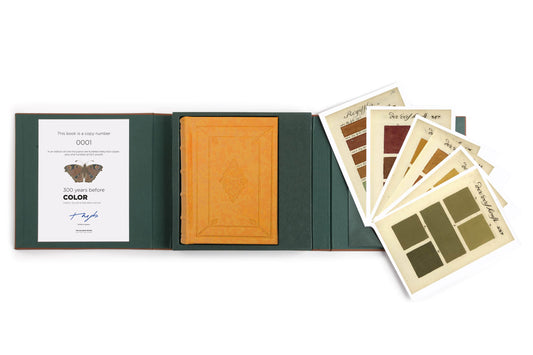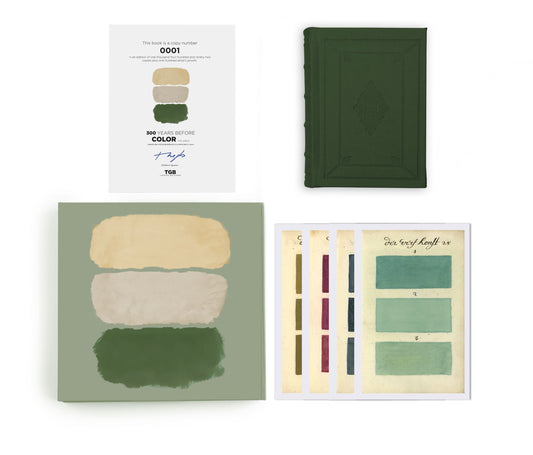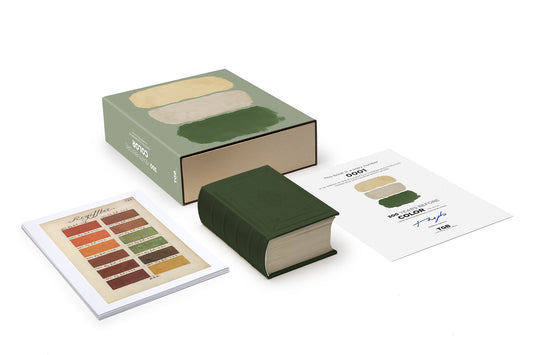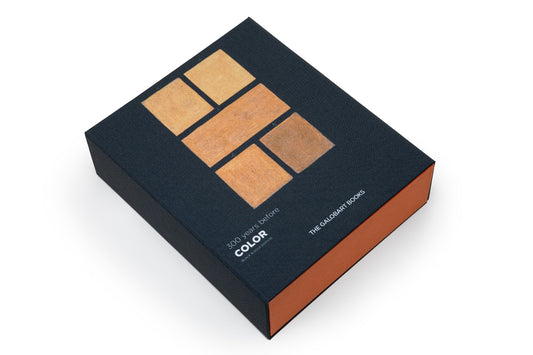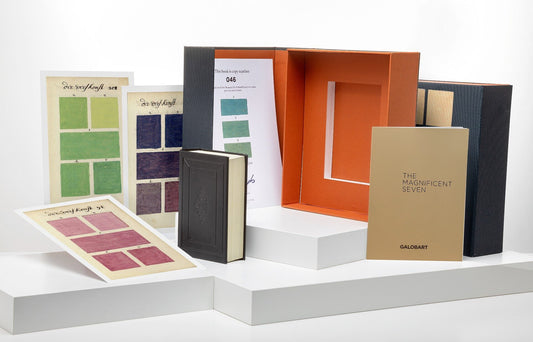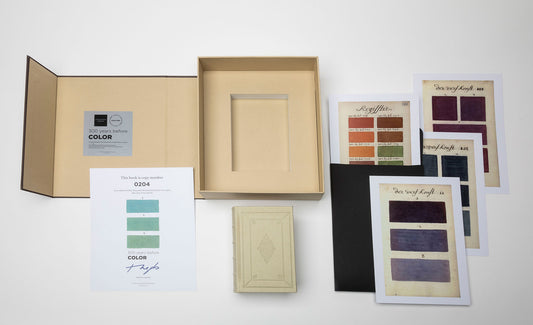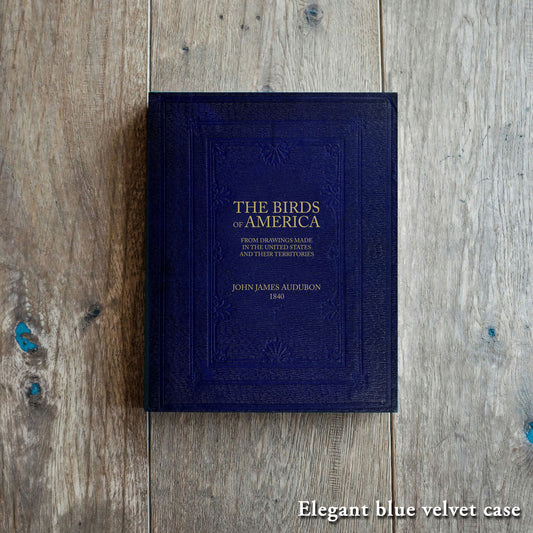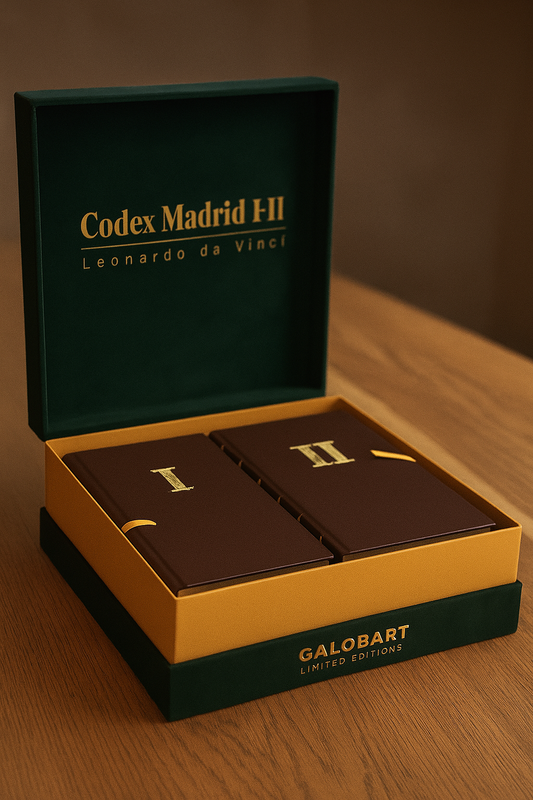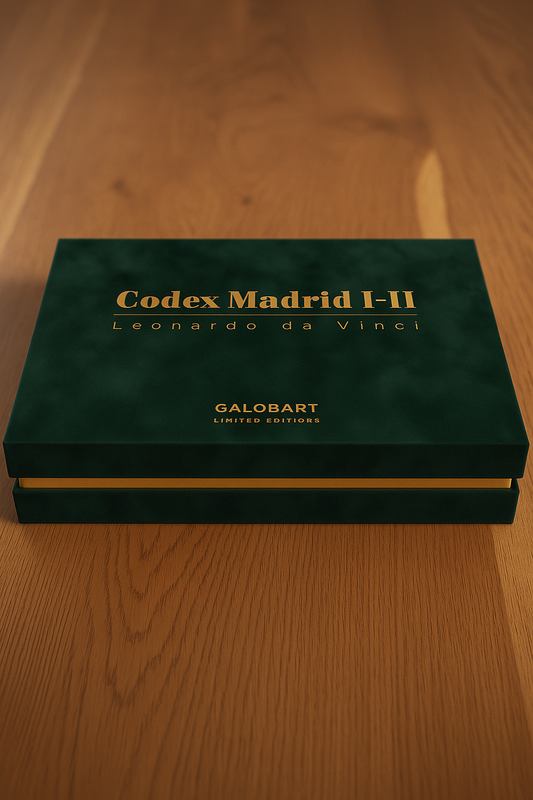COLLECTOR'S EDITION
Codex Gigas - The Devil's Bible
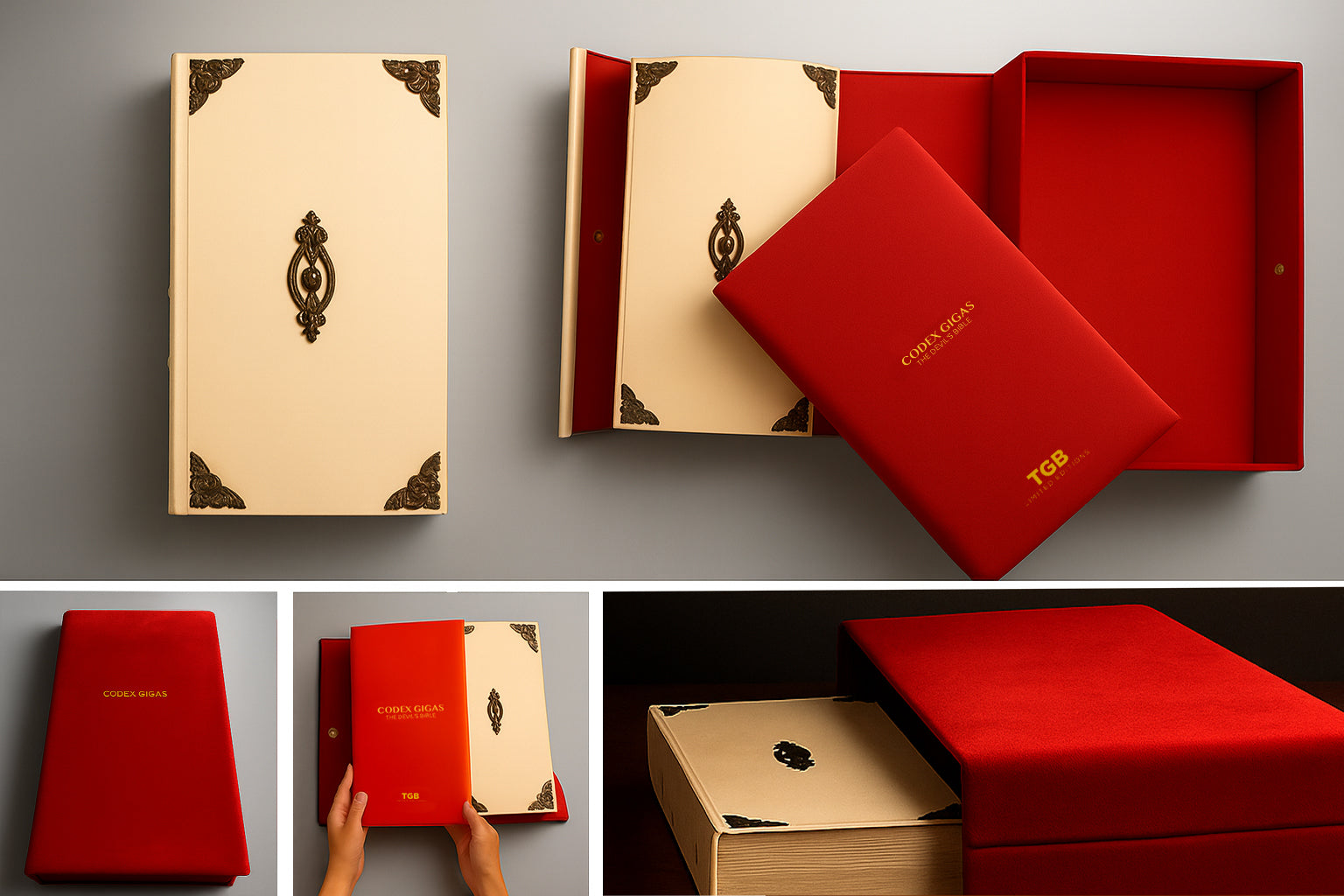
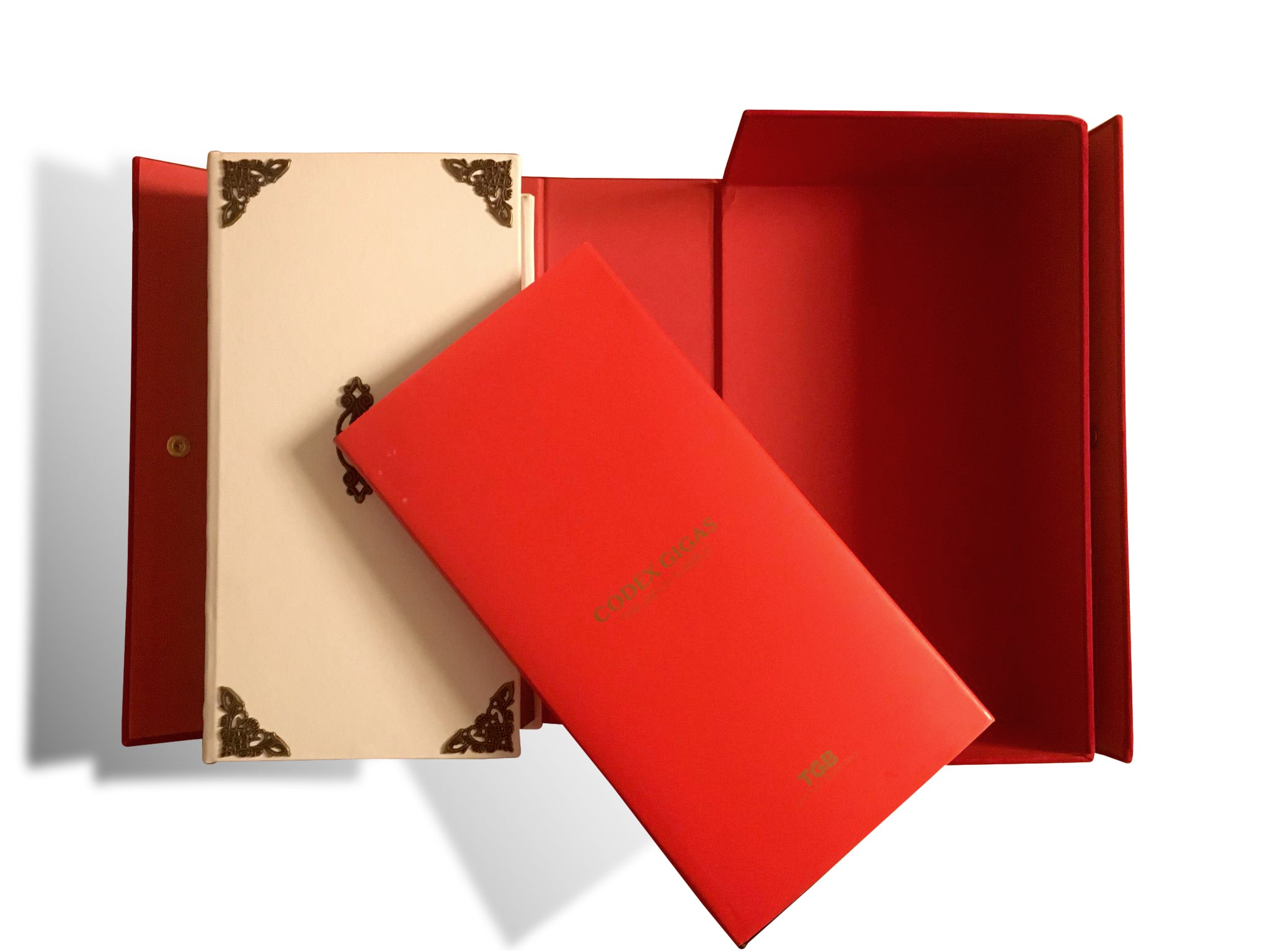
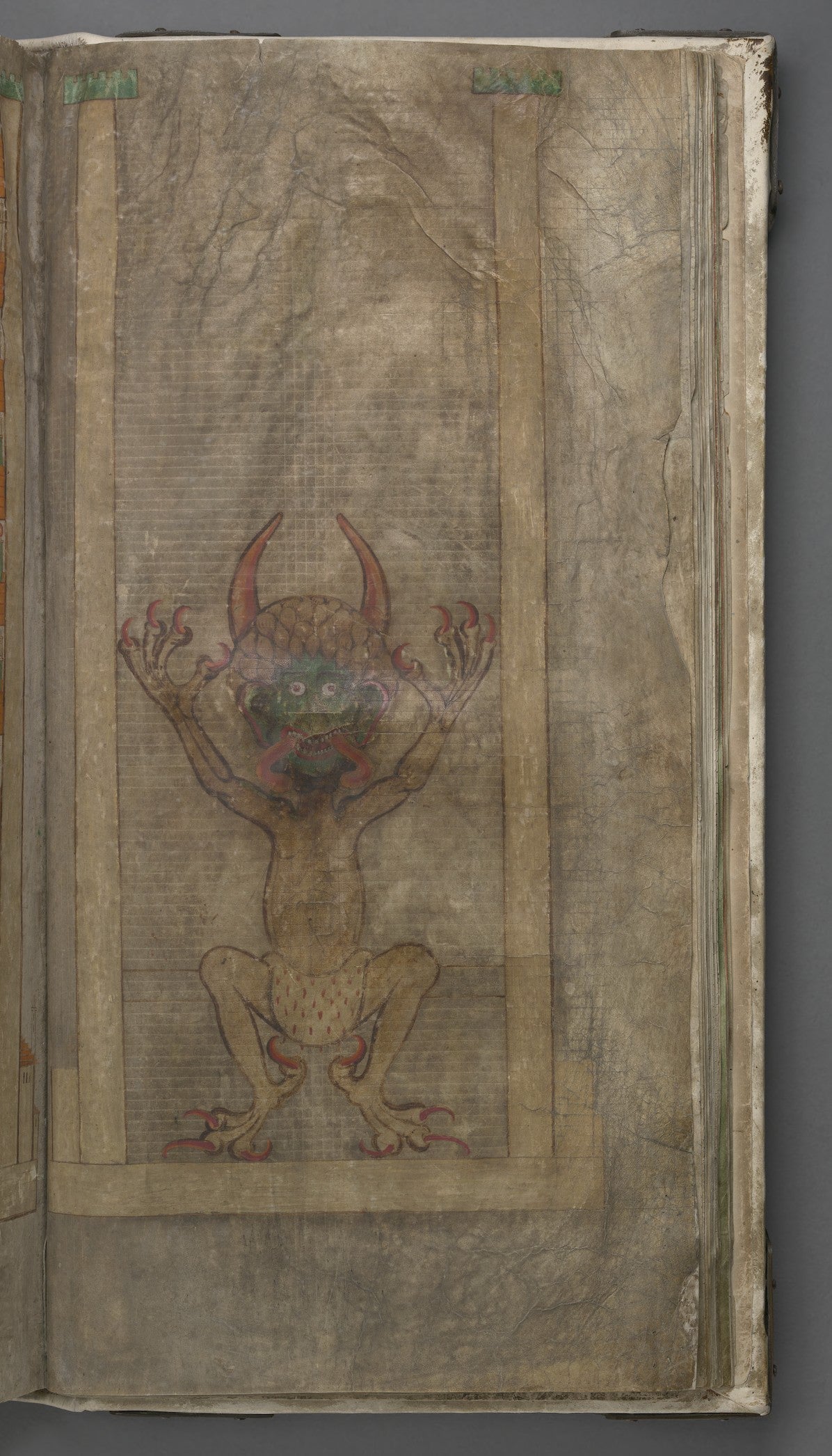
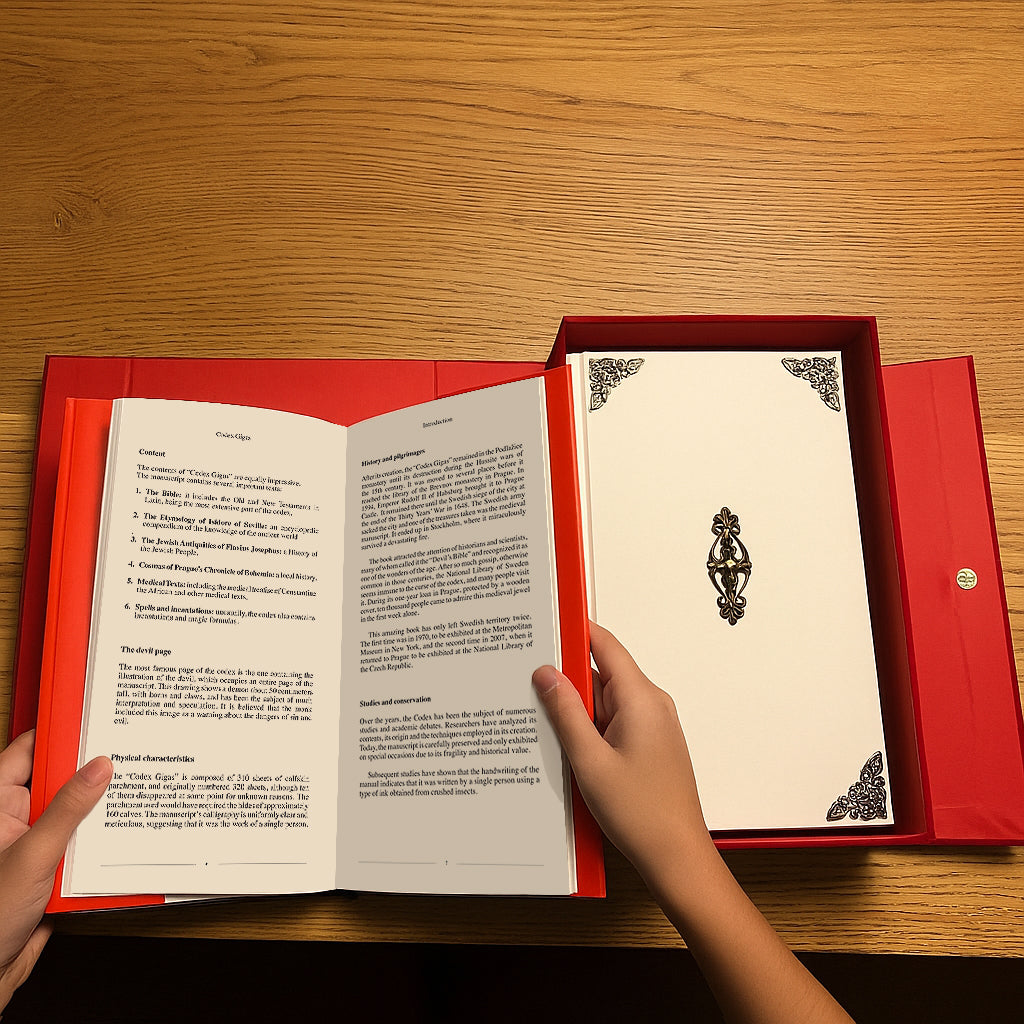
Codex Gigas - The Devil's Bible
Codex Gigas - The Devil's Bible
Limited Art Edition of 666 copies worldwide, each numbered and signed.
No se pudo cargar la disponibilidad de retiro
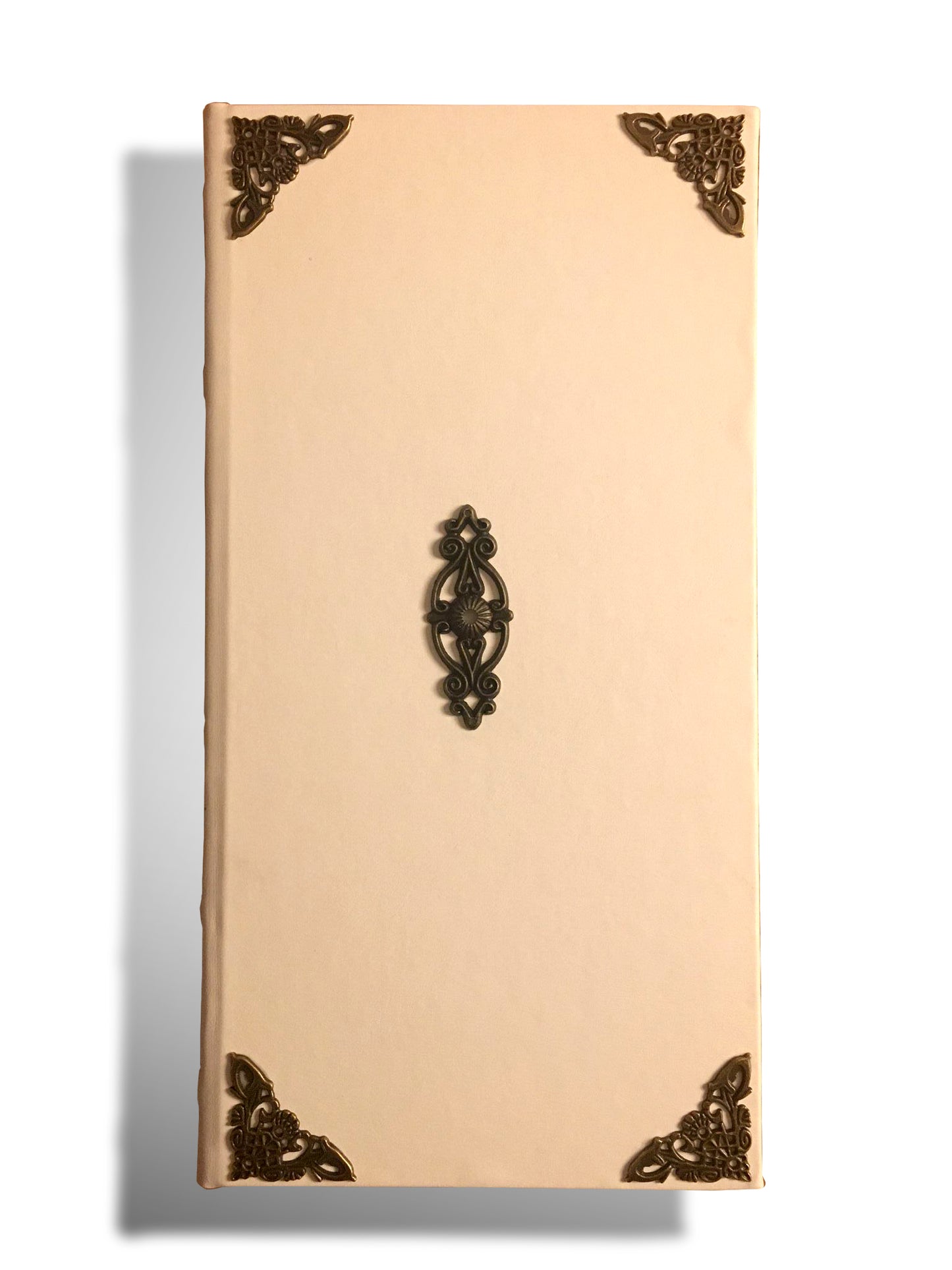
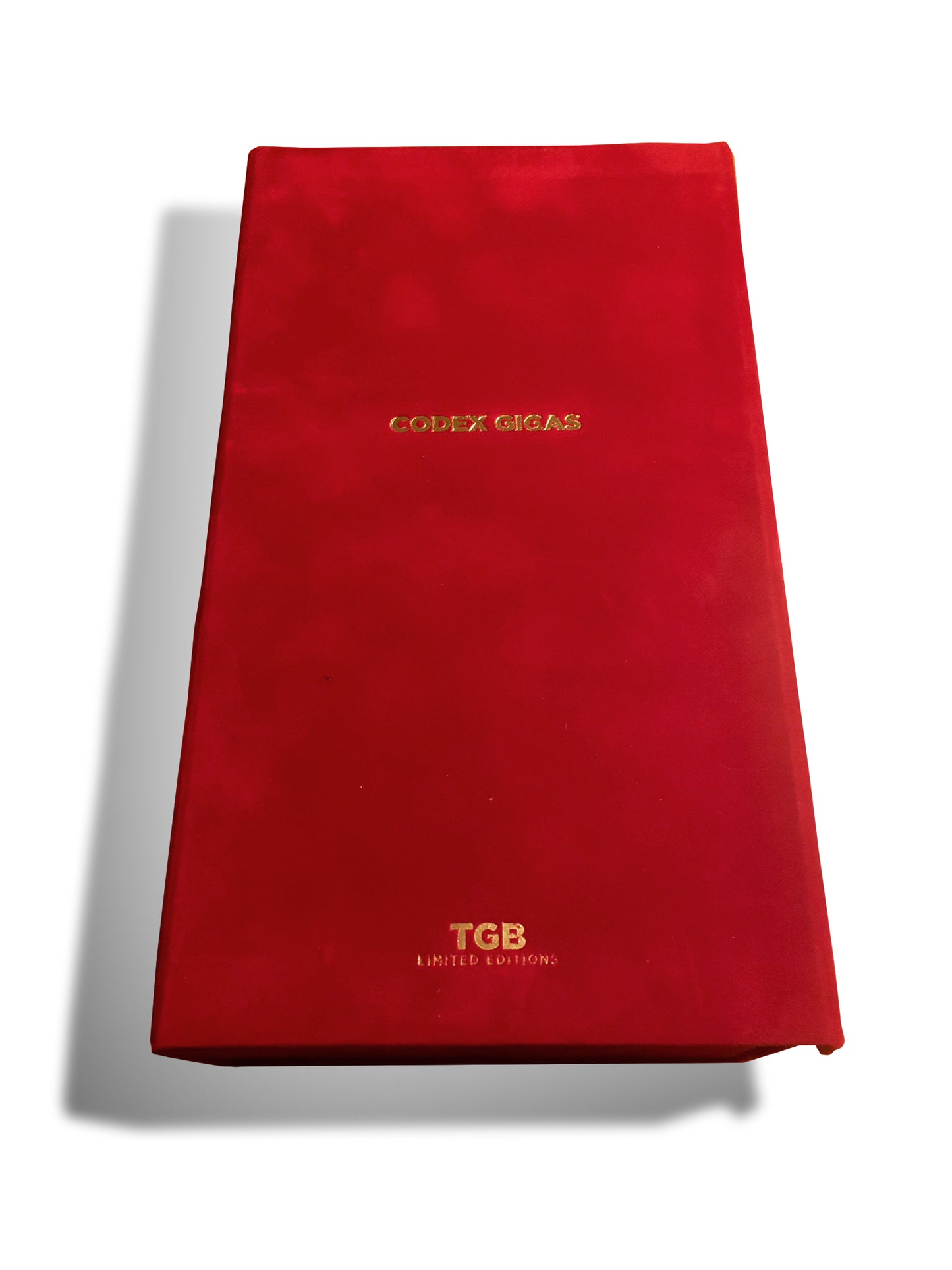
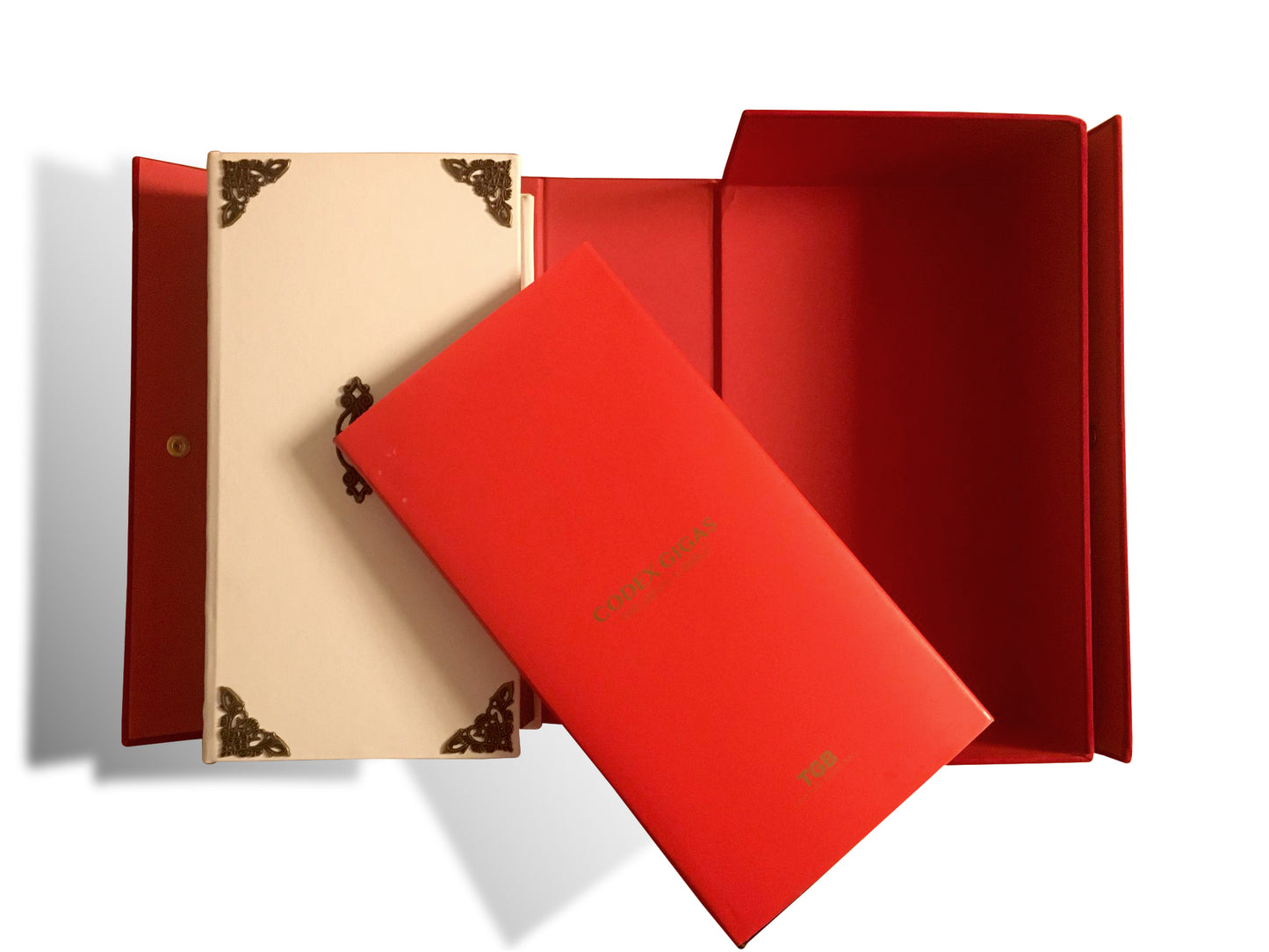
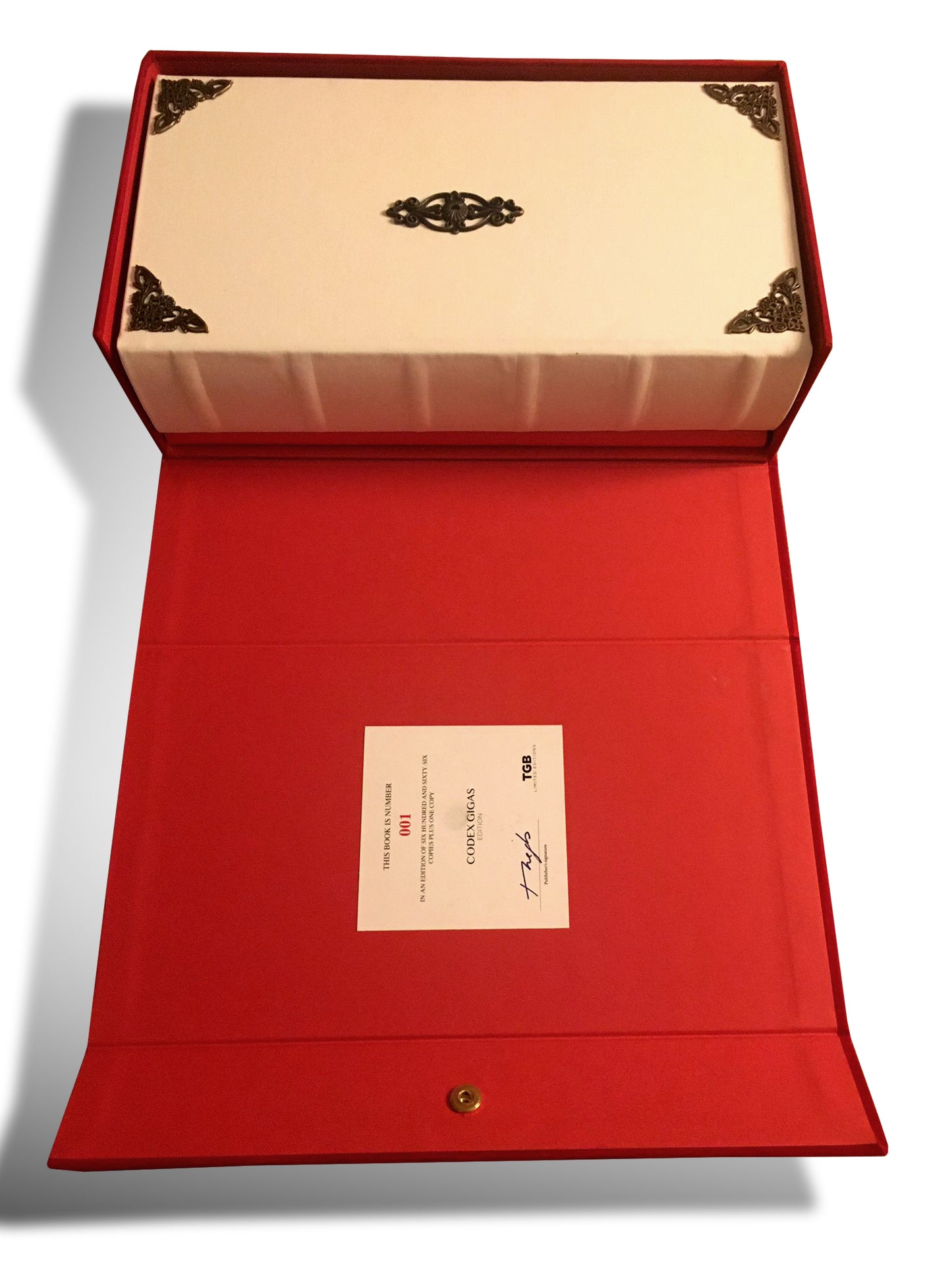
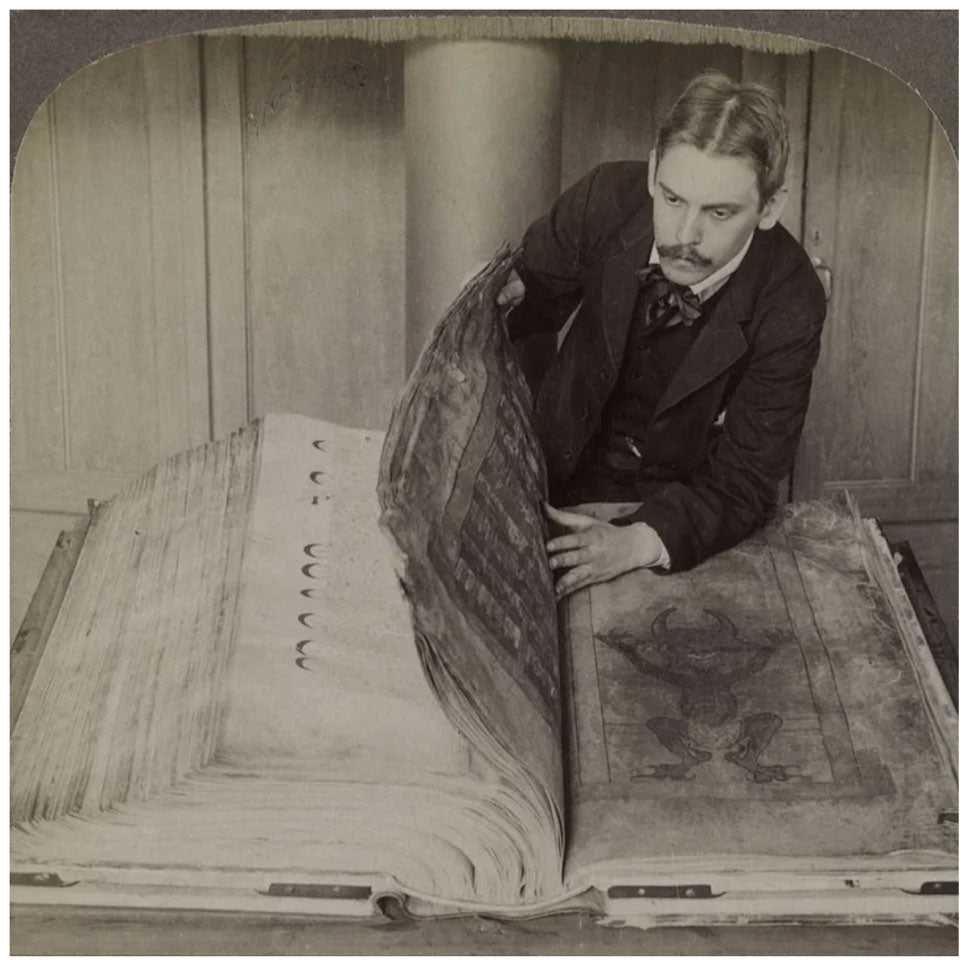
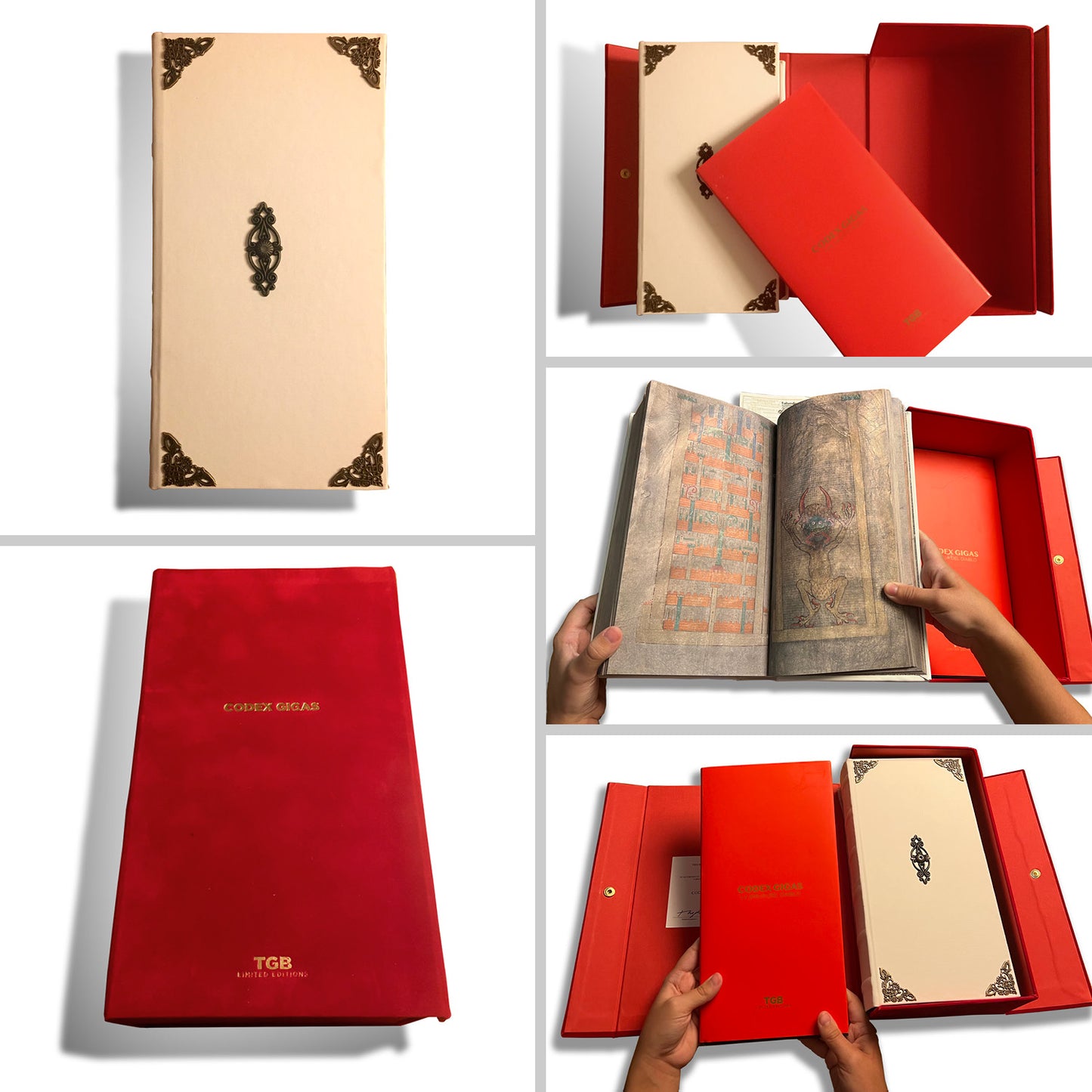

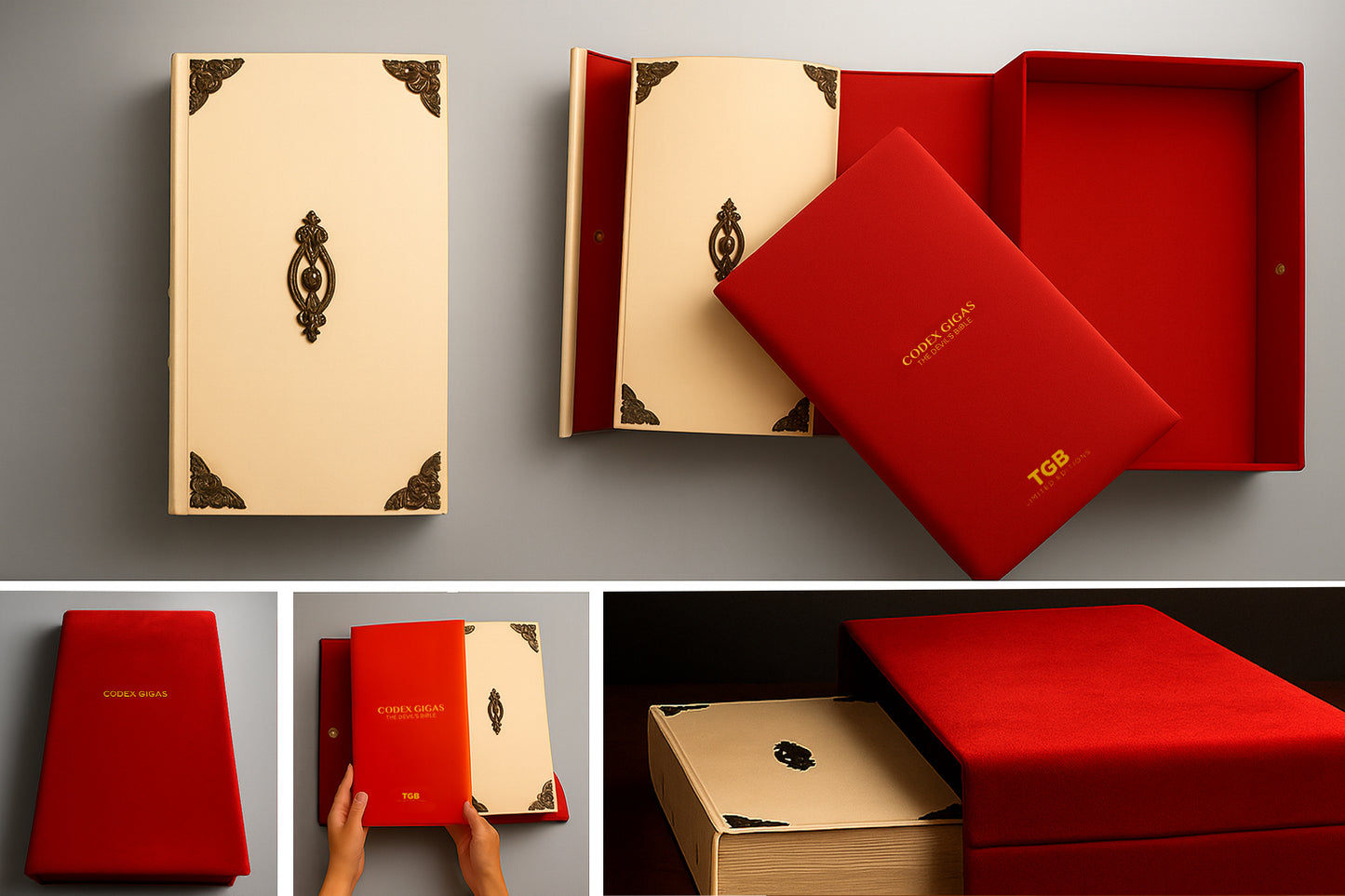
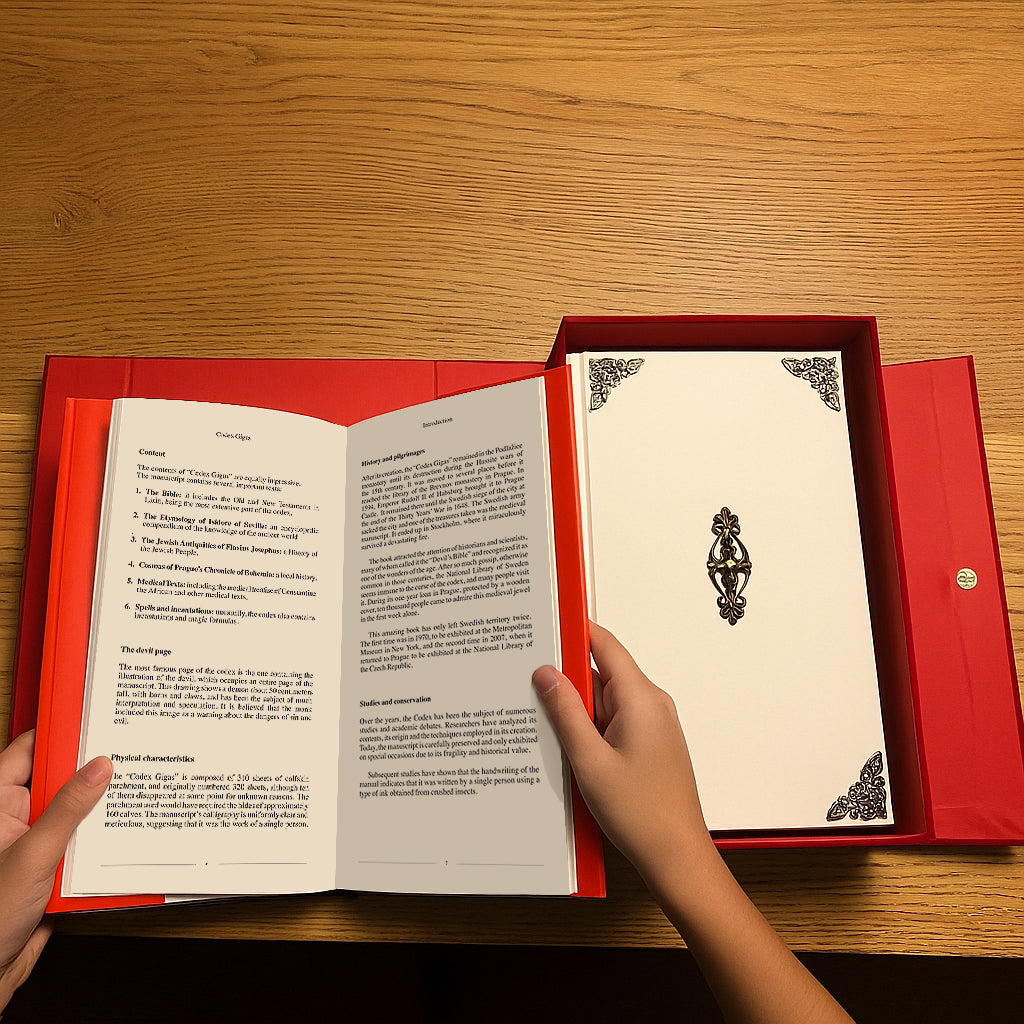
COLLECTOR´S EDITION* Codex Gigas - The Devil's Bible*
Limited Art Edition of 666 copies worldwide, each numbered and signed.
*The Book: 624 pages. 6 x 11.42 in. ( in proportion to the original )
*An elegant handmade red velvet case containing the original book, the study book and a label printed in Pantone White, numbered from 1 to 666.
*Study book in hardcover with dust jacket.
Now $220/After $380.
JUST PUBLISHED. FEW LEFT
Now free shipping.
Orders after March 1st: 1-2 weeks
Codex Gigas - The Devil's Bible
75 kilograms. 624 pages. That is the weight of the mysterious Codex Gigas, which literally means "big book." This heavy manual, written in Latin, holds a dark legend that begins in the monastery of Podlazice (Czech Republic) in 1230. It is also known as the Devil's Bible.
According to experts, it would have taken approximately 30 years to write a book containing the Old and New Testament; two works by Flavius Josephus: the "Ars medicinae" or The Art of Medicine; Isidore of Seville's "Etimologías," a calendar, and Cosmas of Prague's "Chronicle of the Bohemians," among other enigmatic texts. However, according to the myth, the Codex was handwritten in a single night by a single man. A Benedictine monk, known as Herman the Recluse, whose intention was to redeem himself or save his life on the eve of his execution. The only way the monk could see himself completing the impossible task was with the help of the devil. So, after selling his soul, the scribe was able to fulfill the order and obtain his freedom. The legend claims that this pact with the devil may explain why the Prince of Darkness is so prominently represented on one of the codex pages. However, it is not known where this legend began, and it is suspected that it was religiously propagated.
Although portraits of the Devil were common in medieval art, his representation in the Codex Gigas stands out for presenting him alone on a large page.
From there, it is mentioned that the monastery fell into disgrace, and the unsettling work would become part of the rare book collection of Emperor Rudolf II of Habsburg, who could incorporate it into his disturbing library in the late 16th century after a long journey.
The next mention of the Codex Gigas is when Rudolf II took it to his castle in Prague in 1594. It remained there until the Swedish siege of the city at the end of the Thirty Years' War in 1648. The Swedish army plundered the city, and one of the treasures they took was the medieval manuscript. Thus, it ended up in Stockholm, where it miraculously survived a devastating fire. The book attracted the attention of historians and scientists, many of whom dubbed it the "Devil's Bible" and recognized it as one of the wonders of the age. After so much talk, on the other hand, common in those centuries, the National Library seems immune to the curse of the codex, and many people visit it. During its one-year loan in Prague, protected with a wooden cover, in the first week alone, ten thousand people came to admire this medieval jewel.
The gigantic medieval manuscript contains 624 pages made from the skins of 160 different animals.
Subsequent studies have shown that the calligraphy of the manual indicates that it was written by a single person who used a type of ink obtained from crushed insects.
It is certain that the hand of the "fallen angel" is not behind the pages illuminated with red, blue, yellow, green, and golden inks. However, its grandiose content mixed with spells, medicinal cures, obituaries, and mysterious texts remains an enigma to this day.
Many hidden messages have not yet been deciphered, and its supernatural nature has sparked the interest and obsession of countless souls who have sought to obtain the codex illicitly. That is why the work remains in the National Library of Sweden, where it has been on public display since 1819.
The Codex left Swedish territory only twice. The first time was in 1970, to be exhibited at the Metropolitan Museum in New York, and the second time was in 2007 when it returned to Prague to be displayed at the Czech National Library.
The Galobart Books is meticulously working on a facsimile edition of this incredible work that treasures great mysteries so that it becomes part of the libraries of enthusiasts of enigma and the beauty of history. In a different size and weight.
⭑⭑⭑⭑⭑
Hi Alejandra Just wanted to say thank you for your help, patience and communications regarding my order of the Codex Gigas. I received it safely yesterday via DHL and it looks fantastic. I’m extremely pleased with how the book and presentation case has turned out as you promised.This is the 2nd limited edition that I’ve ordered and I shall cherish them both…Thanks again I look forward to ordering from you again.
Kind Regards
Drew Hartley. United Kingdom
⭑⭑⭑⭑⭑
Just received the Devils Bible. What a thing of beauty it is.
Neil Woodhouse. United Kingdom
⭑⭑⭑⭑⭑
Hi there Galobart! I have just received my order of the Codex Gigas and it is fantastic! Thank you for all your efforts and keep up the great work.
Matt. J. United Kingdom
⭑⭑⭑⭑⭑
Hello!! I just wanted to write and tell you that the Codex Gigas is absolutely stunning! I am so glad I waited for it! The quality of your books is amazing and I will definitely order another book very soon. Thank you for everything you do.
Carol Zemen. Illinois. United States of America
What's Included
*CASE
An elegant red slipcase, the inside of which contains the original facsimile book and a label printed in white and numbered in red from 1 to 666 plus 100 artist's proofs,
*BOOK
The book is reproduced in 6 x 11.44 in. proportion of the original, in the same color tone and with moldings similar to the original.
*CERTIFICATE
Label with Certificate of Originality, numbered from 1 to 666, plus 100 artist's proofs, printed on NEW PIONNER paper of 350 grams.
STUDY BOOK
It includes a book on the journey of the manual from its discovery to the present day and some opinions of historians who provide curiosities and information about it. A work that is said to have been cursed and that brought doom to those who possessed it, but that nevertheless continues to be one of the greatest medieval treasures to this day.
CONTACT US FOR ANY QUESTIONS YOU MAY HAVE
Others also love...
-
300 YEARS BEFORE COLOR, Velvet Royal Blue Edition.
Precio habitual $159.00Precio habitualPrecio unitario / por -
300 YEARS BEFORE COLOR Deluxe Edition
Precio habitual $280.00Precio habitualPrecio unitario / por -
300 YEARS BEFORE COLOR Rothko Tribute Edition
Precio habitual $280.00Precio habitualPrecio unitario / por -
300 YEARS BEFORE COLOR Black & Gold Edition
Precio habitual $350.00Precio habitualPrecio unitario / por -
300 YEARS BEFORE COLOR Brown & Ivory edition
Precio habitual $350.00Precio habitualPrecio unitario / por -
The Birds of America
Precio habitual $170.00Precio habitualPrecio unitario / por -
Codex Madrid I and II (Leather Edition)
Precio habitual $480.00Precio habitualPrecio unitario / por -
Codex Trivulzianus
Precio habitual $250.00Precio habitualPrecio unitario / por


